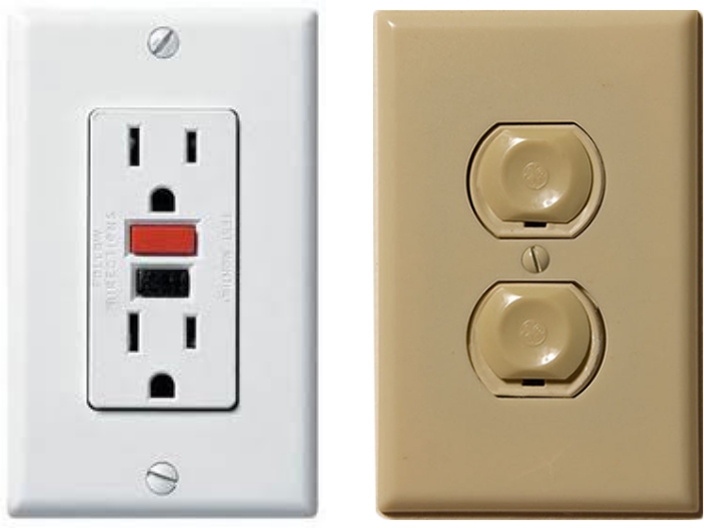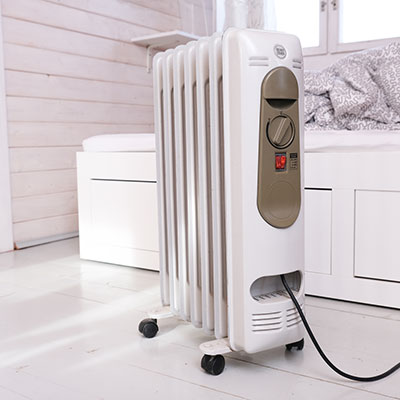Safety at Home
Stay Safe Around Electricity Inside and Outside Your Home
Electricity powers everyday products and appliances in our homes, but we often overlook potential hazards. Handling consumer products safely helps avoid fires, shocks, electrocution, or other electricity-related incidents that can result in injury or even death. In fact, home electrical fires account for an estimated 51,000 fires in this country each year, nearly 500 deaths, more than 1,400 injuries, and $1.3 billion in property damage.
Appliance Safety
Make sure appliances are working properly and always use appliances according to manufacturer's instructions.
- Unplug small appliances such as toasters, hair dryers, and clothes irons when not in use. Only use one heat-producing appliance per outlet.
- Major appliances such as refrigerators, washers, dryers, and microwave ovens should always be plugged directly into a wall outlet. Never use an extension cord with a major appliance.
- Use the correct wattage light bulbs in all appliances. A label on the product should indicate the correct number of watts. Always unplug appliances and electronics before cleaning or performing maintenance.
- Keep electronics at least ten feet away from pools or other bodies of water. If an appliance falls into water, unplug it before you retrieve it. Never pull an appliance out of water while it is plugged in, even if it is turned off.
Outlets

Always use three-pronged (grounded) outlets in your home. Older two-pronged outlets are not grounded and can cause electrical shock.
For areas that that may encounter water, such as bathrooms, kitchens, and outdoor areas, use GFCI (ground-fault circuit interrupter) outlets. These are special outlets installed by a qualified electrician that will trip immediately if a short-circuit is detected.
If you have young children in the home even sometimes, child-proof all electrical outlets with outlet safety caps or Tamper-Resistant Receptacles (TRRs), which prevent access to the charged part of the outlets.
Extension Cords and Power Strips
Follow these guidelines to use extension cords and power strips properly and avoid shock or fire:
- Throw away extension cords that are cracked or frayed.
- Only use extension cords rated for the power that your appliance or tool will draw; only use extension cords outdoors that are rated for outdoor use.
- Do not piggyback extension cords or power strips by plugging them into each other.
- Don’t overload extension cords.
- Only buy extension cords bearing an approval by a Nationally Recognized Testing Laboratory. Find a list of approved testing labs on the OSHA website.
- Only plug extension cords and power strips into three-prong outlets.
- Use power strips with a built-in circuit breaker.
Note that while power strips allow you to increase the number of electronics you can plug into a single wall outlet, they do not change the amount of power the outlet supplies. Be careful not to overload power strips.
Space heater safety

Only use electric space heaters that have automatic shut-off switches and non-glowing elements. Make sure to keep them away from any flammable materials, like curtains or blankets.
- Keep heat sources, like space heaters, at least 3 feet away from drapes, furniture, bedding, or anything that can burn. Never cover your space heater.
- Never place a space heater on top of furniture or near water. Never leave children unattended near a space heater. Do not use extension cords with space heaters.
- Turn off space heaters when leaving the room or going to bed for the night.
Portable generator safety
Portable generators are not intended to replace your home’s energy source. They should be used sparingly for powering a few appliances when power is not available. Portable generators should never be placed indoors and should never be connected to an outlet. Only connect appliances to a portable generator using heavy-duty, outdoor-rated extension cords.
Never attempt to connect a generator to your home's wiring. Only a licensed electrician can connect a generator to your house using a transfer switch. For more information on portable generators, visit our generator safety page.
Pools and Patios
Power lines should not be above or within 25 feet of pools and 12 feet of patios or decks.
Potential hidden electrical dangers in and around pools should not be ignored. Faulty lighting and bad wiring are the greatest potential electrical hazards. Annual inspections are the best way to avoid these dangers. If you notice a tingling sensation when getting in or out of a pool, call a qualified electrician. Learn more about electrical safety in and around pools.
Never use indoor lights for outdoor purposes. Make sure bulbs, wiring, and extension cords are weatherproof and designed specifically for outdoor use. Outdoor lighting fixtures and outlets should have Ground Fault Circuit Interrupters (GFCIs) installed. Learn more about electrical safety outside the home.
Ladders and Scaffolding
When working outdoors, be aware of your surroundings and check for power lines and service drops (a service drop is where an overhead electrical line meets a house or building). Keep ladders, scaffolding and any tools away from power lines. Ladders and scaffolding are conductive and should be kept at least 10 feet away from power lines. Learn more about using equipment safely at home.
